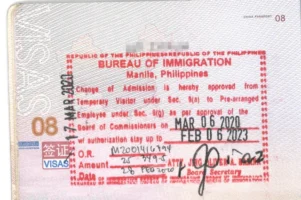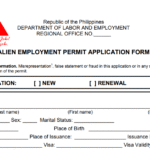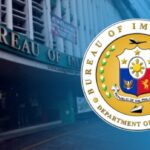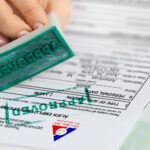For U.S. citizens seeking employment in the Philippines, the 9G work visa is a necessity. This visa allows foreign nationals to work legally for a Philippine-based employer while enjoying residency privileges. However, obtaining a Philippine 9G work visa from the USA is far from straightforward. It involves multiple government agencies, extensive documentation, and long processing times. Missing just one requirement can lead to frustrating delays or outright rejection.
This article provides a comprehensive guide on securing a Philippine 9G work visa, outlining the requirements, application process, and challenges applicants commonly face. Navigating the bureaucracy alone can be overwhelming, so WorkVisaPhilippines.com offers expert assistance to ensure a smooth and successful application.
Can a US Citizen Work in the Philippines Legally?
Yes. A U.S. citizen can work in the Philippines if they have secured a 9G Work Visa sponsored by a registered Philippine employer. Without this visa, any form of employment is considered illegal and may lead to fines, deportation, or blacklisting.
Understanding the 9G Work Visa: What It Is and Who Needs It
The Philippine 9G work visa is issued to foreign nationals who have secured employment with a company registered in the Philippines. This visa allows U.S. citizens to live and work in the country while fully complying with immigration and labor laws.
Who needs a 9G Work visa?
- U.S. citizens whom a Philippine company has offered employment.
- Foreign professionals seeking long-term work opportunities in the Philippines.
- Expats relocating for business purposes require legal work authorization.
- Companies hiring foreign nationals ensure compliance with labor regulations.
Unlike business visas, which only permit short-term visits for meetings or negotiations, the 9G work visa grants full employment rights and long-term residency.
Unfortunately, applying for this visa is a complex undertaking that requires extensive documentation and strict compliance with Philippine immigration policies.
Requirements for the Philippine 9G Work Visa
The requirements for a Philippine 9G work visa from the USA are extensive and involve both the foreign applicant and the Philippine employer. Failure to provide the necessary documentation can lead to delays or visa denial.
For the U.S. Applicant:
- Valid passport (minimum six months validity beyond visa duration).
- Signed employment contract with a registered Philippine employer.
- Police clearance from the U.S. is required to verify that there is no criminal record.
- Medical examination certificate from a Bureau of Immigration (BI)-accredited clinic.
- Visa application forms from the Bureau of Immigration.
- Passport-sized photographs meeting BI specifications.
For the Philippine Employer:
- Business registration documents (SEC or DTI registration, mayor’s permit, BIR certification).
- Company tax records and proof of financial standing.
- Alien Employment Permit (AEP) application through the Department of Labor and Employment (DOLE).
- Justification letter explaining why a foreign national is being hired.
The Challenges of Gathering Requirements
Obtaining the required documents is not simple. The U.S. police clearance alone can take weeks to process. Additionally, medical tests must be performed at a BI-accredited clinic, requiring applicants to be physically present in the Philippines before finalizing their application.
The Philippine employer also faces significant paperwork and must prove that hiring a U.S. citizen is necessary for their business. Any missing or incorrect document can lead to rejection, making the entire process frustrating and time-consuming.
H2: Step-by-Step Process for Obtaining a Philippine 9G Work Visa
The 9G work visa application process is long, involves multiple agencies, and requires strict compliance with Philippine labor laws. Missing one step can result in months of delays.
Step 1: Secure a Job Offer from a Philippine Employer
U.S. applicants must first obtain employment with a Philippine-registered company willing to sponsor the visa. Without employer sponsorship, the application cannot proceed.
Step 2: Apply for an Alien Employment Permit (AEP)
The employer must apply for an AEP from DOLE, which involves posting a job vacancy announcement to ensure no Filipino worker is available. This process alone can take several weeks.
Step 3: Submit the 9G Visa Application to the Bureau of Immigration
Once the AEP is granted, the employer must submit the 9G visa application and all supporting documents to the Bureau of Immigration (BI).
Step 4: Background Checks and Medical Exams
Applicants must pass background checks and undergo medical tests at a BI-accredited clinic in the Philippines. U.S. citizens may need to schedule these tests months in advance.
Step 5: Processing and Approval
Visa processing takes two to three months, with frequent delays due to incomplete documentation or government backlogs.
Step 6: Obtain the Alien Certificate of Registration (ACR I-Card)
Once the visa is approved, applicants must secure an ACR I-Card to confirm their legal working status in the Philippines.
Why the 9G Visa Process is Overwhelming for Most Applicants
Applying for a Philippine 9G work visa from the USA is anything but straightforward. Here’s why:
- Excessive Paperwork: Multiple documents must be gathered, authenticated, and notarized.
- Long Processing Times: Each step requires weeks or months, with no guaranteed timeline.
- Government Bureaucracy: Dealing with DOLE, BI, and other agencies can be confusing.
- Strict Compliance Standards: A minor mistake can result in rejection, requiring applicants to start over.
- High Costs: Visa fees, document authentication, and medical exams add up.
Most applicants find that navigating this process alone leads to costly mistakes and delays.
Benefits of Professional Visa Assistance
Given the complexity of obtaining a Philippine 9G work visa, many U.S. applicants turn to professional visa processing services for assistance. WorkVisaPhilippines.com offers a range of benefits:
- Error-Free Applications: Ensuring all documents meet government standards.
- Faster Processing: Avoiding unnecessary delays.
- Legal Compliance: Preventing issues with visa regulations.
- Stress-Free Experience: Handling paperwork on behalf of the applicant.
Final Steps After Receiving the 9G Work Visa
Once a U.S. citizen secures a 9G work visa, they must:
- Register with the Bureau of Immigration and obtain an ACR I-Card.
- Renew the visa before expiration to maintain legal status.
- Follow Philippine labor laws to avoid deportation.
- Report employment or status changes to the Bureau of Immigration.
Wrapping Up
Obtaining a Philippine 9G work visa from the USA is complicated and time-consuming. From gathering extensive documents to dealing with government bureaucracy, the process is filled with delays, confusion, and potential rejections. Applicants who attempt to navigate it alone often face unnecessary stress and expenses.
Is Assistance Available?
Yes! WorkVisaPhilippines.com specializes in securing 9G work visas for U.S. citizens. Contact us today for an initial consultation to ensure a hassle-free and efficient visa application process.
- Contact Us Here
- Fill Out the Form Below
- Call us at +63 (02) 8540-9623






